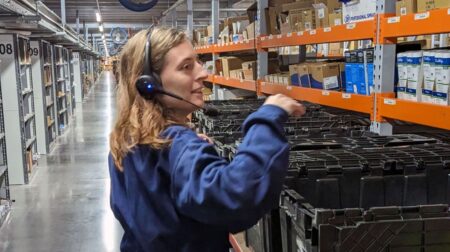Dr Elliott Davies from Wynne-Jones IP explains why robotics companies need to be aware of an imminent change to the European patent landscape…
Robotics companies are pushing forward with innovation at speed and committing large resources to research and development. Safeguarding new technology and the ability to generate a return on investment means that companies need to protect their assets and secure IP rights before launch.
With an increasing demand for patent protection in a growing sector, it is important to be aware of the imminent, significant change to the European patent landscape, namely the introduction of the new unitary patent (UP) and the unified patent court (UPC).
The principal mechanism used to obtain patent protection for an invention across various European states involves the use of the European patent system. This provides applicants with a cost-effective means of obtaining a granted patent compared with filing national patent applications. However, a shortcoming of the European system is that patent proprietors are required to select those states in which they would like to make the patent effective. This post-grant ‘“validation stage’” can include significant translation costs.
Once the validation stage is complete, the single European patent effectively becomes a bundle of standalone , national patents. Proprietors wishing to enforce their national patents are required to do so at the national level using the tried-and-tested national courts. Similarly, if a party wishes to challenge a national patent, then this will need to be done at the national level. As you can see, Sseparate national proceedings are required in different states if proprietors wish to take action to stop an infringer across a number of states. Similarly, a party desirous of avoiding the risks associated with patent infringement in different states would need to conduct separate invalidity proceedings in each state.
This year, the new ‘“unified patent court agreement’” (UPCA) is expected to come into force. Existing national patents which have been obtained via the European patent system will instead fall under the jurisdiction of the UPC.
Also, the new UP will enable proprietors of European patents to cover a new pseudo-region of (currently) 17 EU states in one go. The UP will fall under the exclusive jurisdiction of the UPC and could result in less post- grant translation charges compared with the traditional validation stage.
The UPC will comprise a seat in most member states to the UPCA, but the jJudges appointed to hear the case may not be local to that particular state. Moreover, since there is no case law for this new court, it will be difficult to predict how patent infringement and validity matters will be assessed. However, decisions from this court will have a cross-border binding effect. The UPC can be leveraged to obtain a decision that will take effect in a number of states without having to conduct separate expensive, national legal proceedings.
Equally though, a decision of the UPC that a national patent is invalid will also be binding on other national patents in the family. In this case, it is possible to lose protection across a number of states through by a single decision of the UPC.
Proprietors who wish to shield their portfolio from this ‘“central attack’” can elect to ‘“opt-out’” of the jurisdiction of the UPC, in which case the national patents will fall under the jurisdiction of the national courts, just likeas they do currently. However, proprietors will need to be pro-active in opting out, as the default position is that the UPC will take jurisdiction over the national patents.
There are lots of things to consider and it is important to align the patent strategy with a your business plan. Wynne-Jones IP has a number of experts who can assist and guide you through the forthcoming changes.
For more information, contact Dr Elliott Davies,
pPartner and& pPatent aAttorney at Wynne Jones IP, at
eElliott.davies@wynne-jones.com or visit
www.wynne-jones.com









